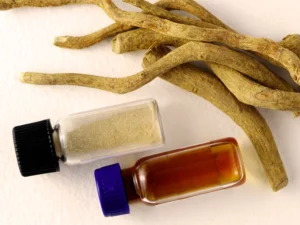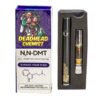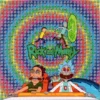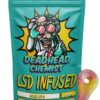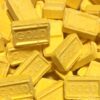Changa has emerged as a popular option among those seeking profound psychedelic experiences. This unique blend combines the powerful compound N,N-Dimethyltryptamine (DMT) with monoamine oxidase inhibitors (MAOIs), creating a distinct experience that many find appealing.
In this article, we will take a deep dive into the ingredients of Changa and explore its effects, benefits, and potential risks.
Key Ingredients of Changa
Changa’s formulation can vary significantly, but it generally includes the following key components:
1. DMT
Description: DMT is a powerful psychedelic compound found in various plants and animals. It is known for inducing intense visual and auditory hallucinations, as well as feelings of euphoria and interconnectedness.
Source: DMT can be extracted from several plants, including Mimosa hostilis and Psychotria viridis.
2. MAOIs
Description: Monoamine oxidase inhibitors are substances that inhibit the activity of the enzyme monoamine oxidase, which breaks down neurotransmitters like serotonin and dopamine.
This inhibition allows DMT to remain active in the body for a longer duration.
Common Ingredients:
Banisteriopsis caapi: A vine from the Amazon traditionally used in Ayahuasca brews, known for its MAOI properties.
Syrian Rue (Peganum harmala): Another plant that contains harmala alkaloids, which are effective MAOIs.
3. Smokable Herbs
Description: Changa is typically infused into a base of smokable herbs, which serve as a carrier for the DMT and MAOIs. These herbs also contribute to the flavor and overall smoking experience.
Common Choices:
Mullein: Known for its smooth smoke and soothing properties.
Damiana: Often used for its relaxing effects and pleasant flavor.
Effects of Changa
The effects of Changa can vary based on the specific blend and dosage. However, some common effects include:
1. Intense Visuals
Users often report vivid and intricate visual hallucinations that can include geometric patterns, colors, and otherworldly landscapes.
2. Altered Perception of Time
Many users experience a distortion of time, with minutes feeling like hours as they journey deeper into their consciousness.
3. Emotional Insights
Changa can evoke a wide range of emotions, from bliss and joy to introspection and reflection. Users often gain insights into their lives and relationships.
4. Spiritual Experiences
Many individuals describe their Changa experiences as deeply spiritual, reporting feelings of interconnectedness with the universe or encounters with entities.
Benefits of Using Changa
Changa offers several potential benefits, including:
Therapeutic Insights: Users may find clarity and understanding regarding personal issues, leading to emotional healing.
Mood Enhancement: Some individuals report sustained mood elevation and a sense of well-being after a Changa session.
Enhanced Creativity: Many users claim that Changa sparks creativity and inspiration, making it popular among artists and musicians.
Potential Risks and Considerations
While Changa can provide profound experiences, there are potential risks to be aware of:
1. Psychological Distress
– High doses or unfavorable settings can lead to anxiety, paranoia, or overwhelming experiences.
2. Interactions with Medications
– Changa should not be combined with other serotonergic drugs or substances due to the risk of serotonin syndrome, a potentially life-threatening condition.
3. Set and Setting
– The user’s mindset and environment heavily influence the experience, making it crucial to use Changa in a safe and comfortable space.
Conclusion
Changa is a fascinating and complex blend that offers unique opportunities for exploration and growth. Understanding its ingredients and effects allows users to approach it with respect and caution.
Whether you seek therapeutic insights, spiritual experiences, or creative inspiration, Changa can be a powerful ally on your journey.
As with any psychedelic substance, it’s essential to prioritize safety, be mindful of dosages, and create a supportive environment for your experience.

